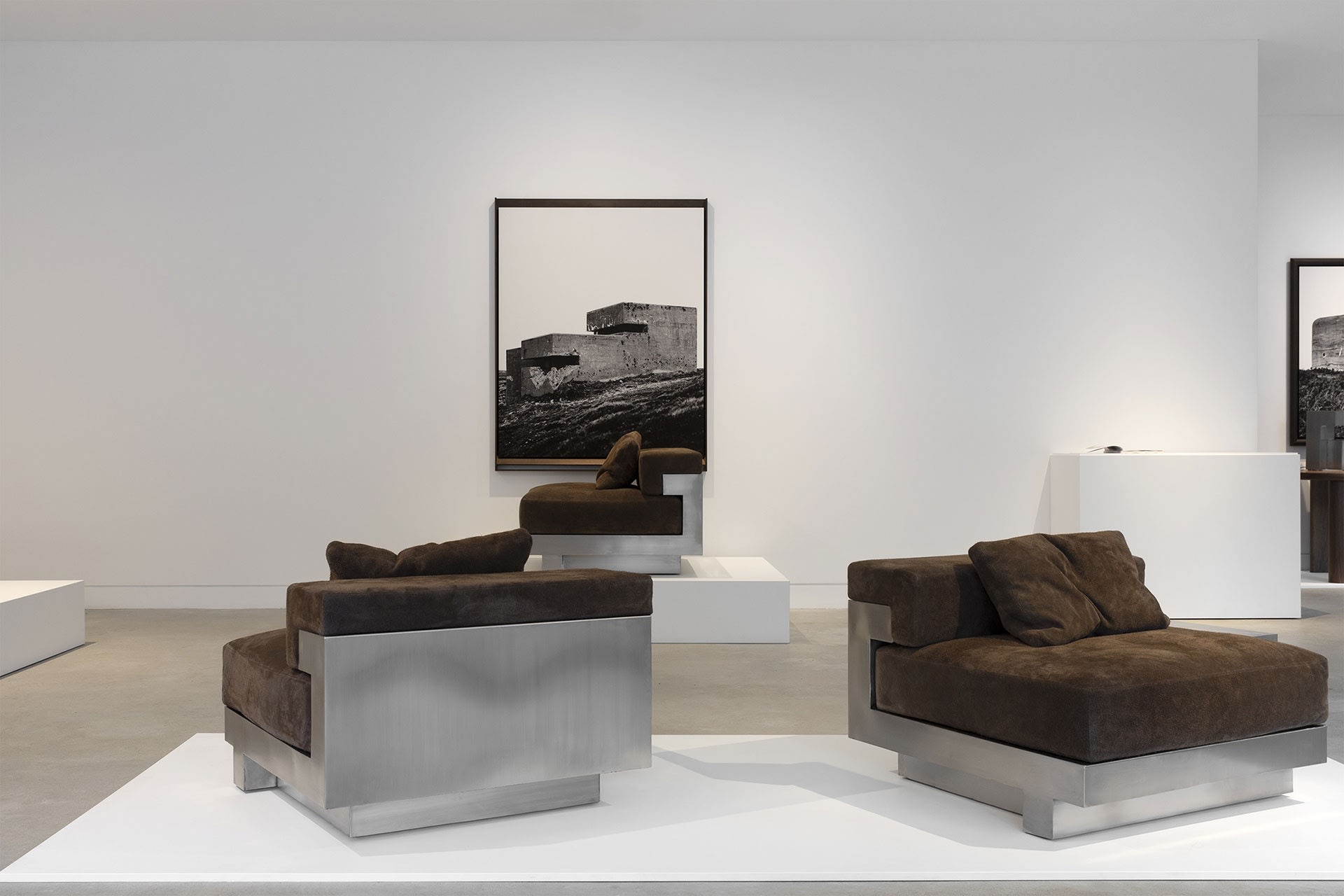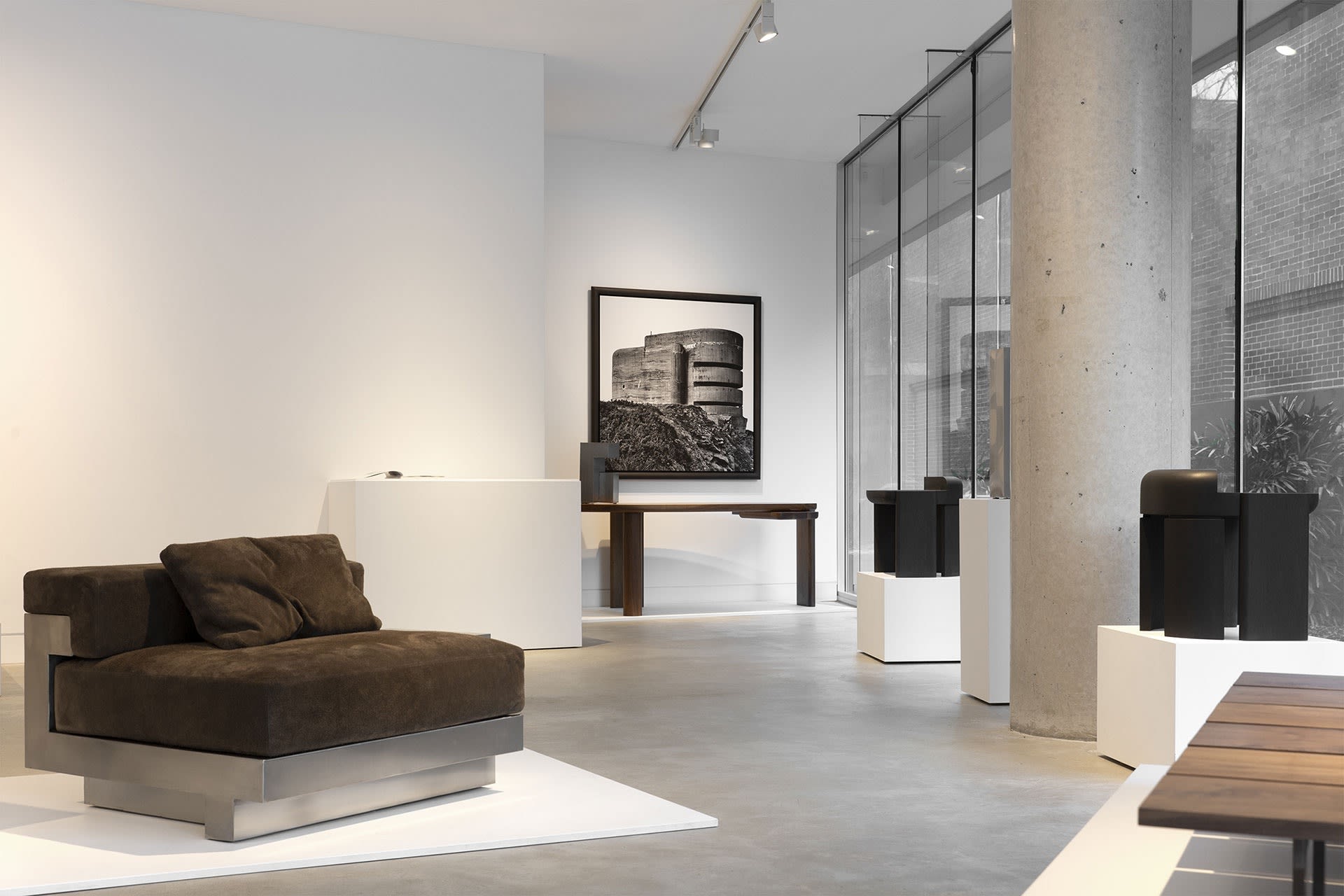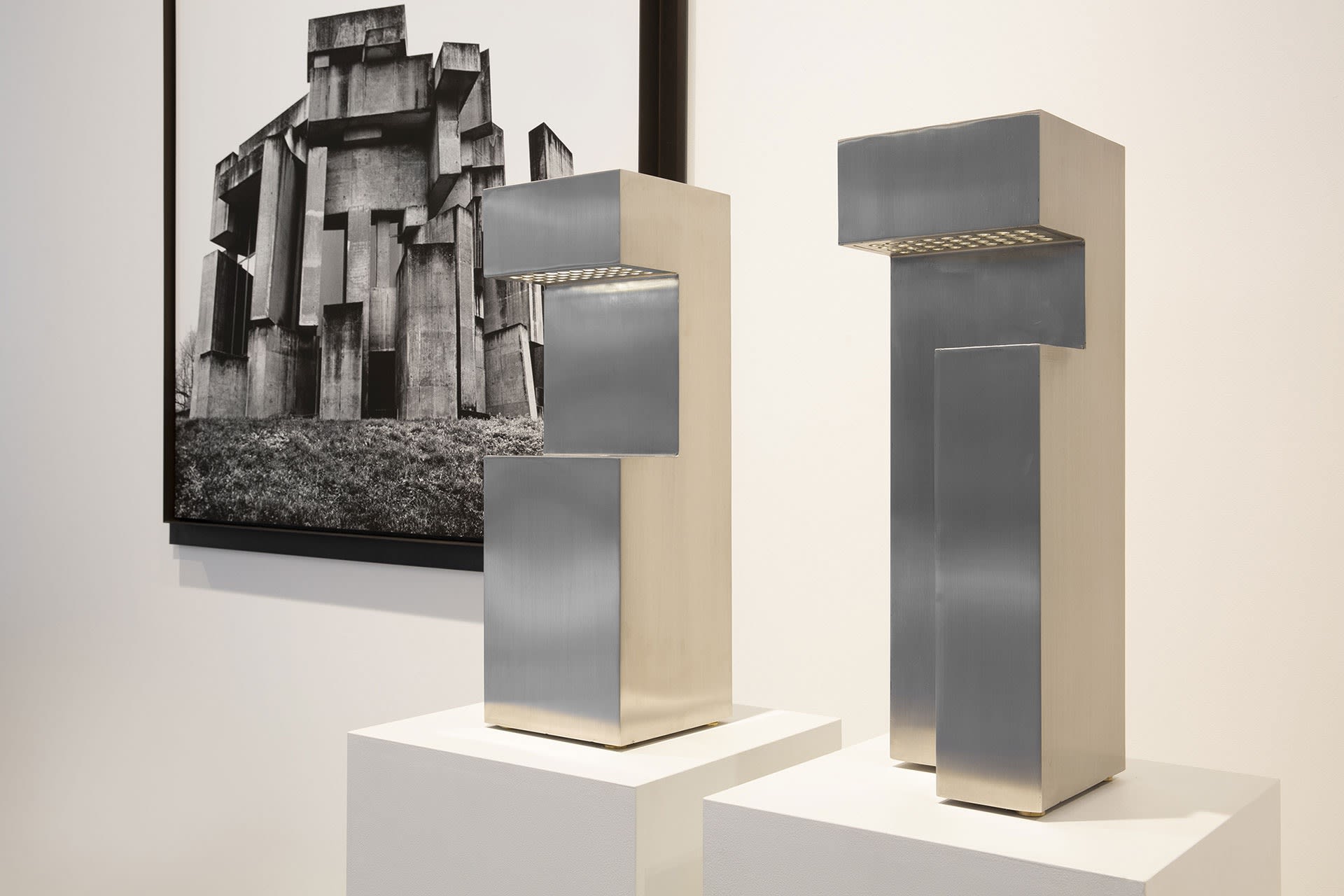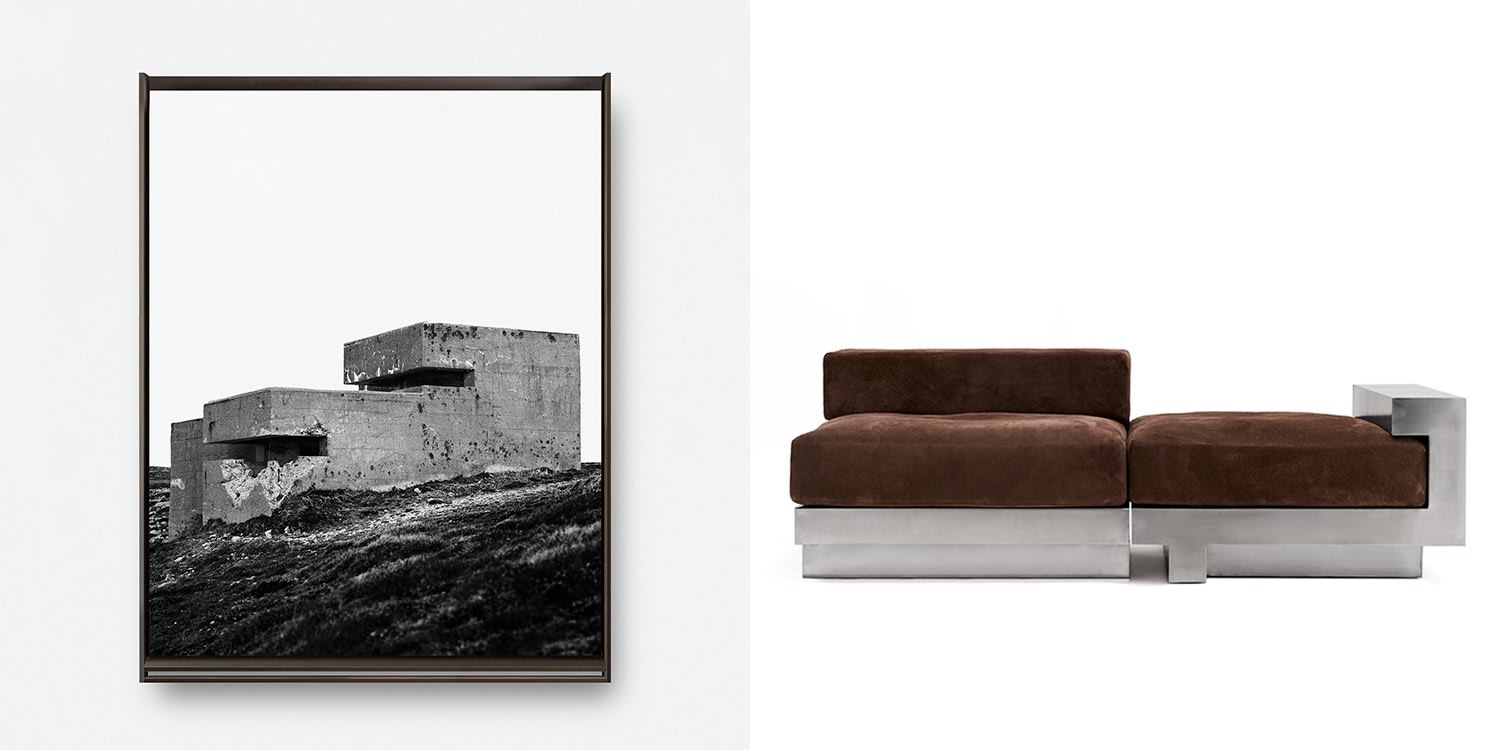“Creative outcomes are more often than not the accumulation of what you have been exposed to,” says Australian designer, director, and visual artist Don Cameron. Cameron’s 20-year-long photographic explorations of enigmatic monuments across Europe exude effects that make one question the structures’ origins. Titled ‘Communion’, his photo-media series unveiled in 2020 depicted brutalist architecture designed for protection, worship and commemoration – encountered and studied over the course of twenty years. Albeit representing different histories, Cameron presented these images in similar typography: monochrome compositions in purpose-designed patinated brass frames. Translating the sensibility of the photographs to a different medium, Cameron has designed a series of objects that positions itself at the crossroads of sculpture, art and design. His solo exhibition dubbed ‘Translations’, a translation of the photographic to the functional, adorns Australia-based Gallery Sally Dan-Cuthbert from September 3, 2022, to October 2, 2022. “Translations is an explicit example of how architecture, art, design, and sculpture merge imperceptibly to become an important complement to living,” says Sally Dan-Cuthbert, Director of Gallery Sally Dan-Cuthbert.
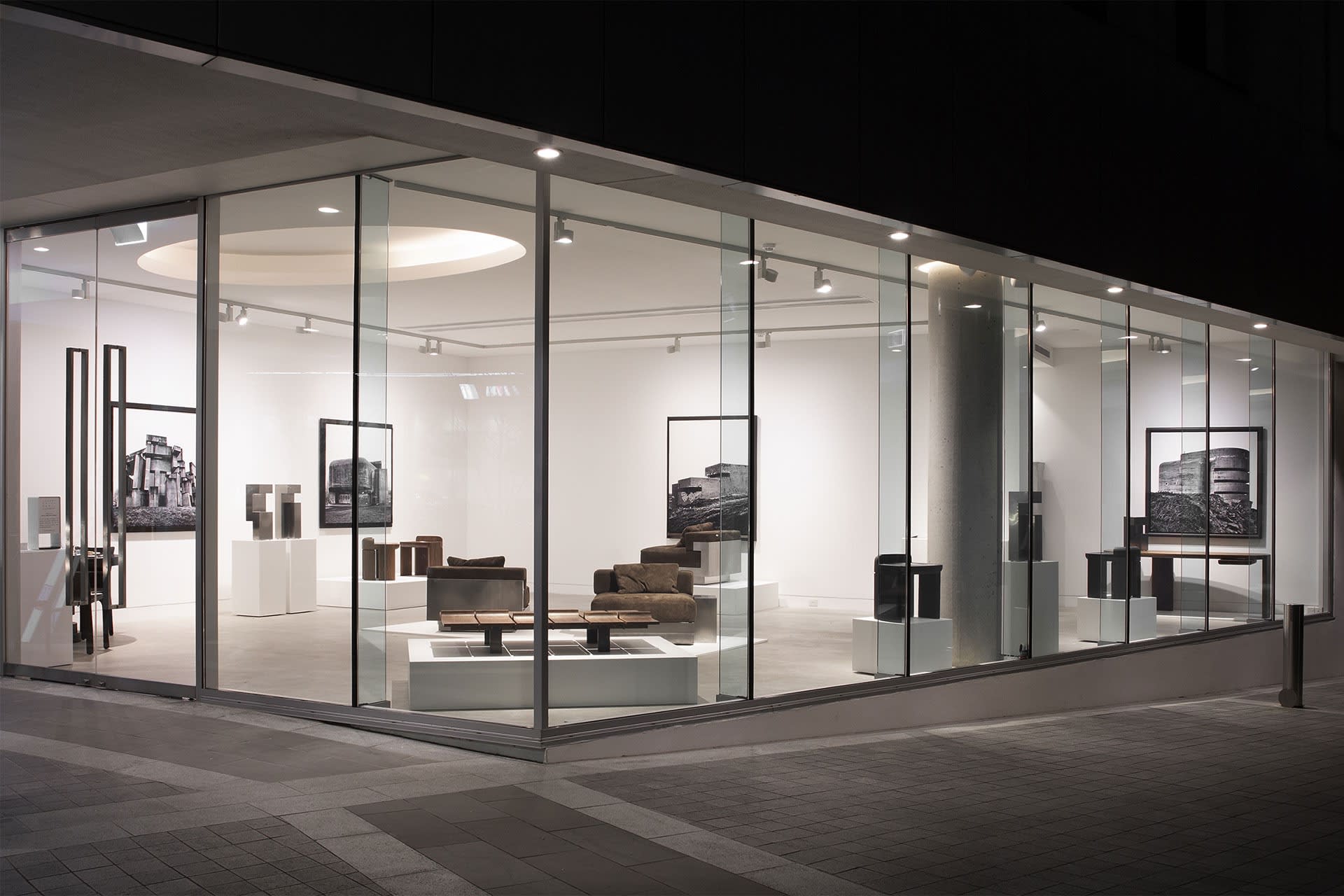
This is Cameron’s second solo exhibition with Gallery Sally Dan-Cuthbert
Image: Courtesy of Don Cameron and Gallery Sally Dan-Cuthbert, Sydney
Don Cameron translates the photographic atmospheres to new furniture pieces
Image: Courtesy of Don Cameron and Gallery Sally Dan-Cuthbert, Sydney
From images of the Atlantic Wall in Germany to those of a series of churches and monuments in Yugoslavia, the photographs take the stage without the historic context that could give them more meaning. The sequences of photographs are identified only by their names rather than full details of their locations, a decision which gives all of them more universal meanings. “Communion was a ’slow project’ that was realised over the course of 20 years and sat alongside what I was engaged with during this time which is in fact my life story since Design School in London, where I directed music videos, designed interiors, collected historic design,” shares Cameron. “I like the idea of such creative threads that continue to evolve over the years and in this case move between mediums. If an idea still resonates after such a period, it has conviction and is worth extrapolating,” he adds.
The series of objects brings together art, design, and sculpture
Image: Courtesy of Don Cameron and Gallery Sally Dan-Cuthbert, Sydney
Each design draws inspiration from one of the subjects of the photographs
Image: Courtesy of Don Cameron and Gallery Sally Dan-Cuthbert, Sydney
Cameron is an artist whose work resists categorisation, much like the monuments that piqued his interest. The ensemble of furniture designs influenced by his architectural photography mirror the subjects’ forms and character. The furniture collection includes a desk, a coffee table and a stool design made in timber, a daybed or modular sofa design, and a series of floor lamps in steel. Each of the designs exhibits an observable association with one of the subjects of his photographs. Instead of merely being furniture-sized replicas of brutalist buildings, they encapsulate the spirit captured in the photographs. The fitting frames and filming of the objects that convey an entire spectrum of emotions spotlight his experience in filmmaking. “The buildings in this series were used to commemorate, worship or protect,” says Cameron. “Translations translates the atmosphere as well as formal qualities of the buildings in Communion as inspiration for a range of functional works,” he adds.
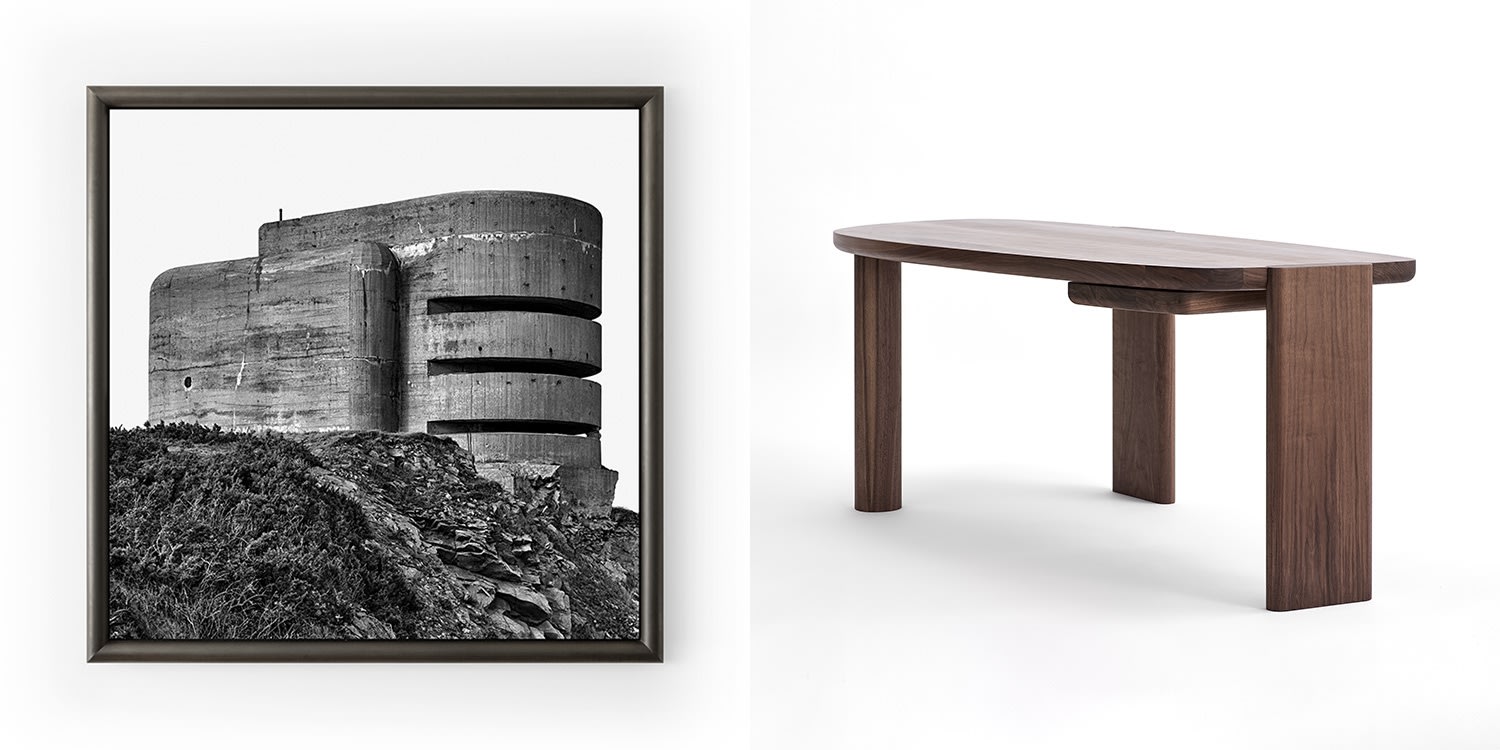
The Alderney desk replicates the character of an observation post in Alderney
Image: Courtesy of Blake Azar and Gallery Sally Dan-Cuthbert, Sydney
The concrete wreckage of an observation post in Alderney turns muse for his desk with a drawer. Christened Alderney, this piece of wooden furniture embodies the craftsmanship of refined furniture-making. The monolithic Nevers stool, on the other hand, is evocative of the colossal church in Nevers, Burgundy by French architect Claude Parent and critic Paul Virilio. The stool is a facsimile of the structure in its aura and weight; it abandons concrete and is sculpted from black American walnut. The rough board-marked surface of the material shows the timber moulds in which it was cast. The sweeping roofs of a house by Parent guide the silhouette of Cameron’s coffee table designs realised in three versions: Up Down, Double Ramp, and Oblique.
The curving roofs of Claude Parent’s architecture guides the coffee table design
Image: Courtesy of Blake Azar and Gallery Sally Dan-Cuthbert, Sydney
The Australian artist draws inspiration for his lamp designs from the stacked forms of the Wotruba church in Vienna. The extruded rectangular volumes of his Bloc floor lamps are created out of patinated sheet steel. The Bloc sofa has a steel structure to support its sheet steel surfaces, similar to the Yugoslav memorials. The modular design is a composition of individual components—like Italian seating systems of the 1960s—and has leather cushions upholstered with a blend of feathers and foam to balance the sharpness of rectangular form with softness. “I feel very comfortable designing objects and working with small ateliers and artisanal production to realise these works. The Translations works will engage with different materials and continue to evolve as new works are added to the series,” says the furniture designer.
Bloc floor lamps are influenced by the Wotruba church in Vienna
Image: Courtesy of Don Cameron and Gallery Sally Dan-Cuthbert, Sydney
Cameron, despite not being a maker himself, hones his close relationship with skilled wood and metal workers and upholsterers. In this process, the designer becomes a participant and an observer in tandem. The individual components for the desk, the stool, and the coffee table are cut and shaped using a milling machine, programmed with a digital translation of Cameron’s freehand sketches. They are then hand-finished in a workshop in Sydney, combining traditional woodworking skills with automated machines and operated with computer numerical control. The metal frames for the lighting designs and the seating units are cut from sheets of stainless steel and welded together, a process that lacks precision.
loc sofa mirrors the brutalist building in Jersey
Image: Courtesy of Blake Azar and Gallery Sally Dan-Cuthbert, Sydney
The atmosphere that Cameron’s images have captured moves from one medium to another as he seeks ways to achieve the effects of surface patina and form his photographs into a new medium. At the same time, he ensures that his furniture is not overwhelmed by the burden of the content it carries. The sensibility of those brutalist buildings traverses three stages: a building is translated into a photograph, which then morphs into an object. The boundaries between design, architecture and sculpture blur as they merge into one another. This sphere, termed functional art, has been discussed since the 1980s when designers such as Ron Arad, Tom Dixon, and Marc Newson explored this territory through their work. More often than not, objects that carry the onus of functionality were looked down upon in the past. On the contrary, art that had no utility enjoyed a high status. Contemporary artists and designers challenge the status quo, blurring this rigid distinction in contemporary design. With ‘Translations’, Cameron continues to reflect on and evolve his work in terms of form, emotion and mood, expanding his oeuvre across media.
‘Translations’ will be on display from September 3, 2022, to October 2, 2022, at Gallery Sally Dan-Cuthbert, New South Wales, Australia.

